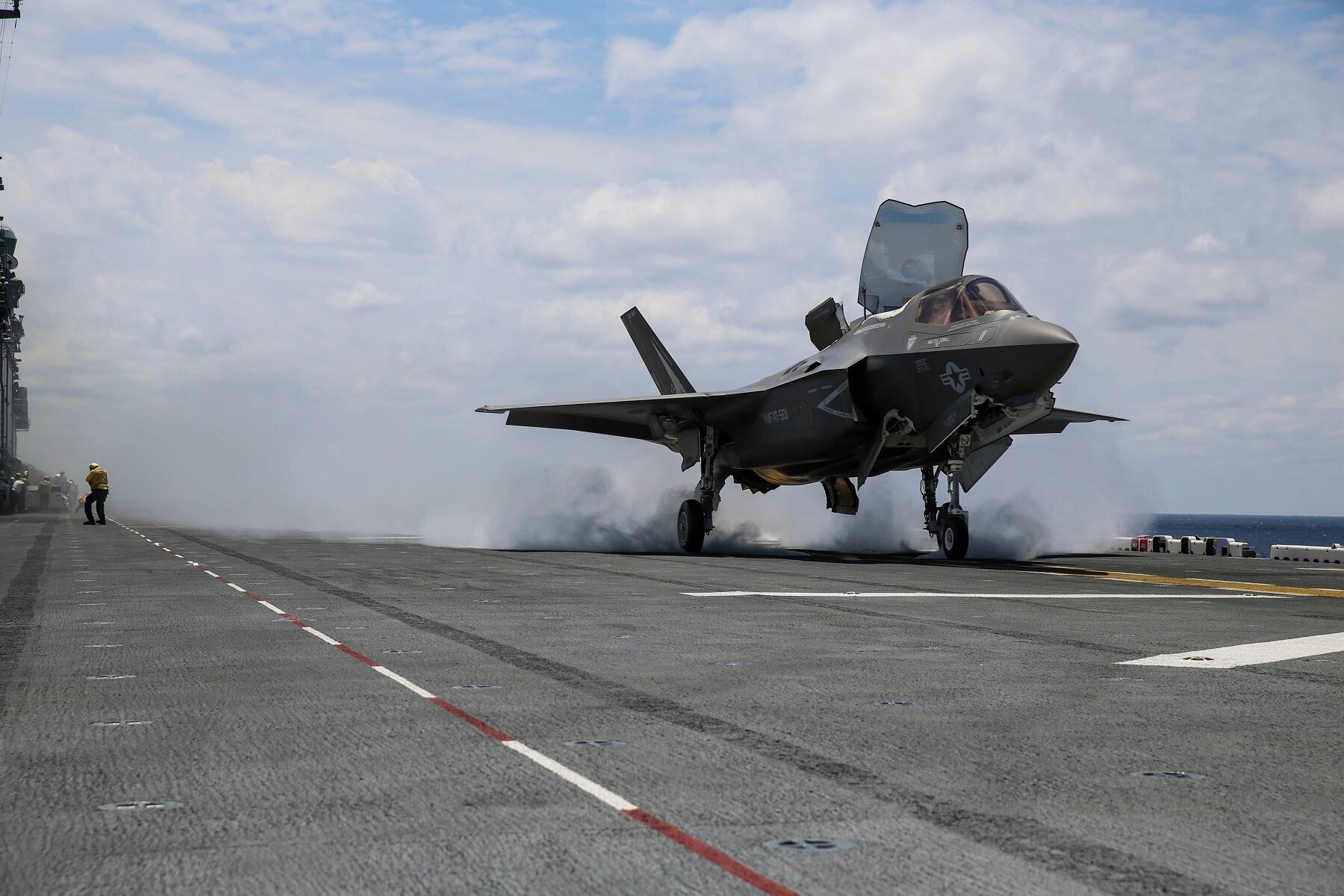MELBOURNE, Australia — The U.S. Navy amphibious assault ship Wasp has arrived at its new home port in Japan, setting the stage for the first time the Lockheed Martin F-35B Lightning II fighter jet will go to sea on an operational cruise later this year.
The Jan. 14 arrival of the ship at the 7th Fleet base at Sasebo marks the end of a 28,400-mile journey from Norfolk, Virginia, that began in August and included nearly two months of humanitarian relief efforts following two hurricanes in the Caribbean, during which aircraft onboard the Wasp moved a total of 1,129 passengers along with 26,720 pounds of equipment and more than 1.7 million pounds of various logistical support items, including 328,100 pounds of food and water.
“The arrival of USS Wasp represents an increase in military capability and a commitment to our partners and allies for security and stability in the region,” said Capt. Colby Howard, Wasp commanding officer. “Paired with the F-35B Joint Strike Fighter, we remain ready to execute the full range of military operations from crisis response to disaster relief.”
The Wasp will replace the amphibious assault ship Bonhomme Richard as the flagship of Task Force 76, which includes all of the 7th Fleet amphibious forces and is the U.S. Navy’s only forward-deployed expeditionary strike group. Three smaller Sasebo-based amphibious assault ships make up the remainder of the forward-deployed naval forces’ amphibious component.
RELATED

The Bonhomme Richard is due to end a five-year stint in Japan and return to San Diego, California, following a upcoming scheduled patrol in the region, which Defense News understands will include participation in Cobra Gold, an annual multilateral exercise hosted by Thailand in mid-February.
Meanwhile, the Wasp will prepare for its own scheduled patrol later in the year with the Okinawa-based 31st Marine Expeditionary Unit and the F-35Bs of Marine Fighter Attack Squadron 121, which relocated to Iwakuni, Japan, in early 2017. The squadron is the first operational Marine Corps F-35B unit and currently has 16 aircraft at Iwakuni.
The short-takeoff-and-vertical-landing F-35Bs replace rotational detachments of stateside AV-8B Harrier II jets to Okinawa under the Marines’ Unit Deployment Program, or UDP. The last Harrier UDP detachment ended in August 2017, flying back to the U.S. from Australia following the exercise Talisman Saber.
Relocation of the Wasp and the upcoming F-35 cruise are part of the normal cycle of the forward-deployed naval forces’ deployments and Defense Department efforts to position forward in support of partners and allies the most advanced and capable assets. But like other major military arrivals in the western Pacific, this takes on added significance, as the U.S. and Asian countries react to North Korea’s missile and nuclear tests.
Mike Yeo is the Asia correspondent for Defense News.






